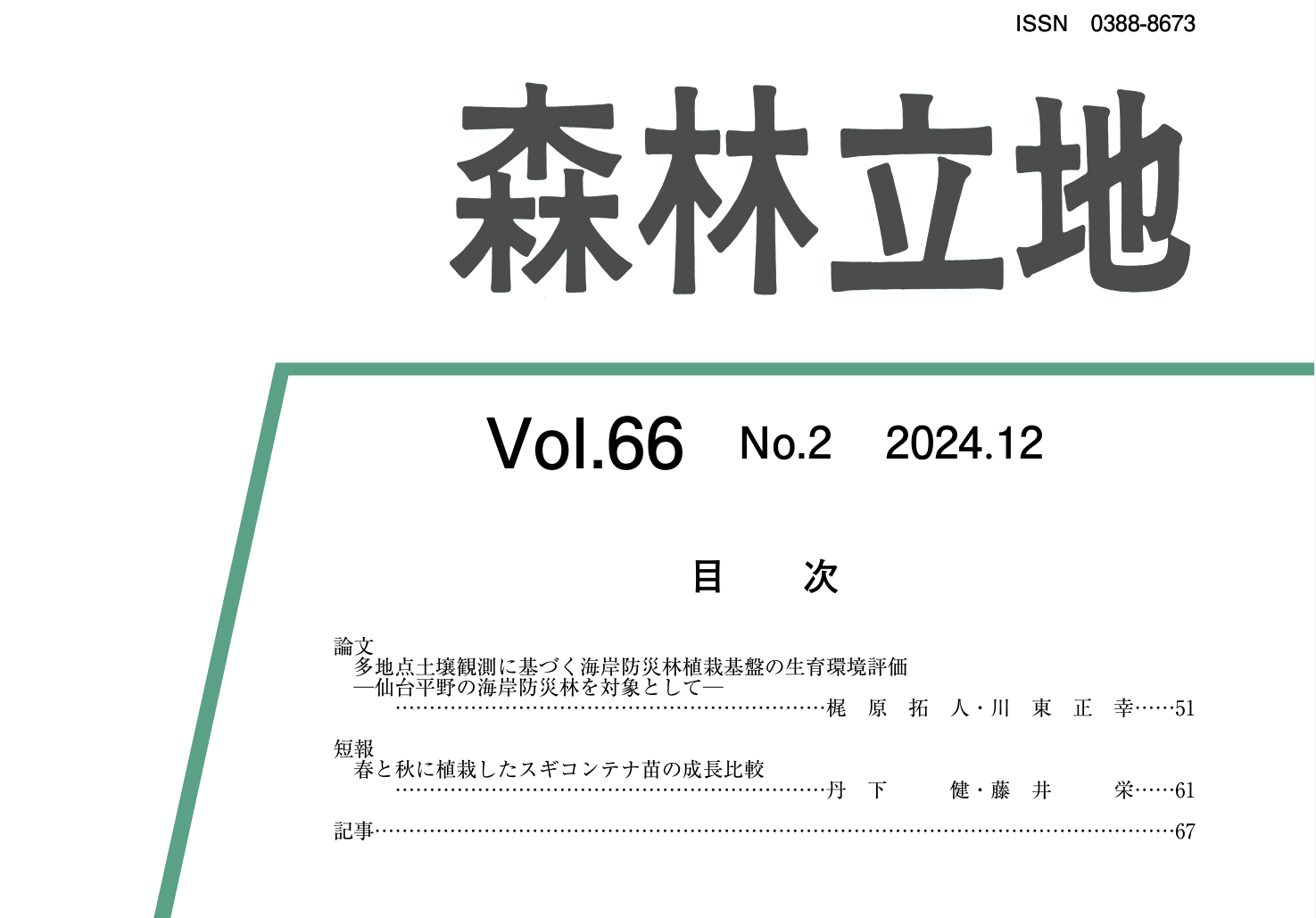森林立地58(1),9~15 2016
Jpn J For Environ 58(1), 9-15, 2016
北海道におけるブナの潜在生育域と分布北限個体群の実態
田中信行1,2,*,井関智裕3,北村系子1,斎藤均4,津山幾太郎1,中尾勝洋1,松井哲哉1
1森林総合研究所・2東京農業大学・3東京植生研究会・4黒松内町ブナセンター
ブナの分布北限の成立理由について8つの仮説があるが,気候決定仮説と北進仮説に大別できる。ブナの優占林
と個体の分布全域の分布予測モデルによると,ブナの分布の北限・上限は冬期の寒さで,南限・下限は生育期の熱量で,優占度は積雪で,おもに規定されている。また,北海道の北部・東部の地域は,ブナ林には寒冷少雪のため,個体には寒冷のため,非生育域に入ると予測される。分布予測モデルは北海道を含む全国の分布データを用いて構築されているので,北海道の潜在生育域は過小予測になっているはずだが,日本海沿いに広がり稚内に達している。この結果は,北進仮説を支持する。将来気候シナリオに基づくと,北海道の潜在生育域の面積は大きく増加すると予測されている。これまでの研究によると,北限最前線付近のブナ個体群は過去から現在まで増加しており,将来も増加と分布拡大を続けると推定されている。2013年にニセコ山系で発見されたブナ個体群は,北限最前線より12km離れている。最高樹齢は131年で,いろいろな大きさの個体があるとともに小さい個体が多いことから,ここでもブナが増殖していると推定される。この新分布北限個体群の最初の個体の侵入時期が古いこと,周辺地域における広域の現地調査でブナが発見できなかったことから,北限最前線以北における他のブナ個体群の密度は大変低い。新分布北限地点に基づく移動速度は約12m/年である。
Nobuyuki Tanaka, Tomohiro Iseki, Keiko Kitamura, Hitoshi Saito, Ikutaro Tsuyama, Katsuhiro Nakao and Tetsuya Matsui:Potential habitats of buna (Fagus crenata) and the current situation of the northernmost populations in Hokkaido. Japanese Journal of Forest Environment 58:9―15, 2016.
Eight hypotheses on the cause of northern distribution limit of buna (Fagus crenata) can be classified into two types, the climate determining one and the northward migrating one. According to two distribution models for buna forests and individuals, northern and upper limits of distribution, southern and lower limits, and its dominance were respectively controlled by winter coldness, heat in the growing season, and snow accumulation. Northern and eastern regions of Hokkaido were predicted to be non-habitats both for buna forests due to winter coldness and a little snow, and for buna individuals due to winter coldness. Since the distribution models were developed using distribution data of whole Japan including Hokkaido, the models seem to underestimate potential habitats (PHs) in Hokkaido. However, PHs covered coastal areas along the Sea of Japan in Hokkaido, reaching the northernmost region. These results support the northern migration hypothesis. The models predicted the expansion of PHs in Hokkaido under the future climate scenarios. Buna populations near the northern distribution front (NDF), which had increased in the past, were estimated to reproduce and expand in future, according to previous studies. The buna population found in Niseko Mountains in 2013 is located 12 km apart from NDF. This new northernmost population also showed reproduction since it consisted of individuals of various size with the oldest one of 131 years and many small ones. Because of this population established such many years ago and no other buna populations found by the survey in extensive areas, buna populations are very rare in the areas beyond NDF. The migration speed was estimated to be 12 m/yr, based on this population.
キーワード: 分布予測モデル,植物の移動,気候変化,分布北限,増殖





